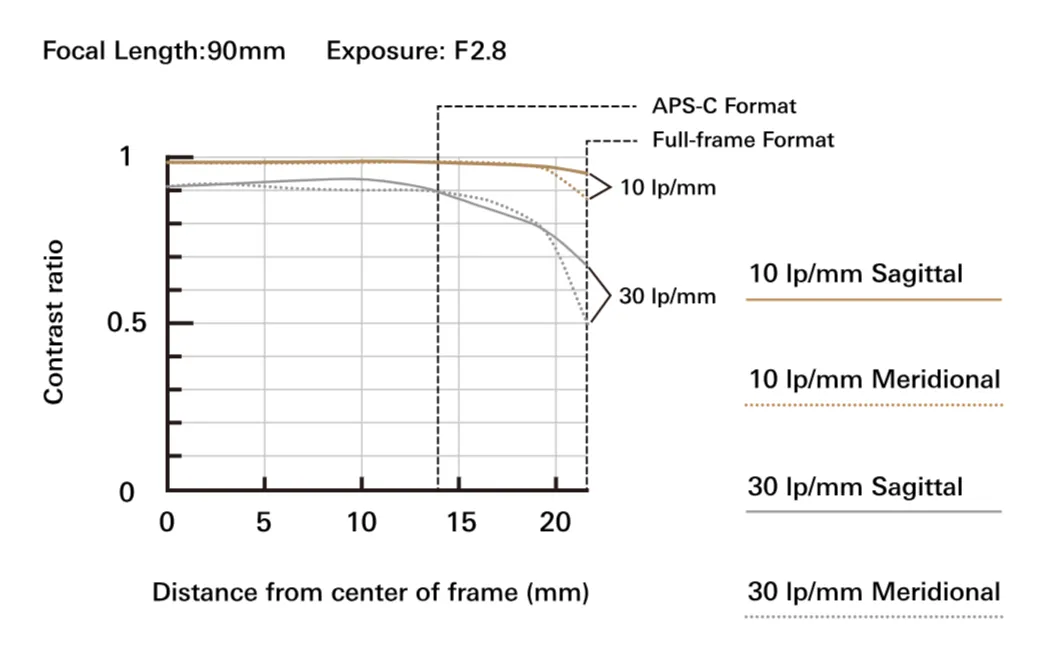#Articles

When choosing a lens, you may see an “MTF curve” in a catalog or on a website. At first glance, this graph may look complicated, but understanding its meaning will help you choose a lens. In this article, we will explain the basics of how to look at this MTF curve and how to use it when choosing a lens.
What is MTF (MTF curve)?
MTF is an abbreviation for “Modulation Transfer Function,” and it is a numerical representation of how faithfully the light signal can be transmitted to the sensor through the lens. This MTF is usually expressed as a smooth curve. The horizontal axis (X axis) is the image height (distance from the center of the image) and the vertical axis (Y axis) is the MTF to evaluate the performance of the lens.
This graph is called an “MTF curve (MTF diagram)” and is used as important reference data for evaluating the contrast reproducibility and resolution of lenses.
How to read the MTF curve
Graph of MTF vs. distance from the center of the screen (image height) (mm)
The MTF curve published by Tamron shows how the MTF changes according to the image height, with the number of white and black line pairs per mm fixed at 10 lines/mm and 30 lines/mm.
Lenses with a 10 lines/mm curve close to 1 (maximum value) are evaluated as lenses with excellent contrast reproduction and so-called “good clarity”. On the other hand, lenses with a 30 lines/mm curve close to 1 are high-resolution lenses that can depict finer details and are characterized by “sharp” depiction. Therefore, lenses that show high values at both frequencies are considered to have excellent optical performance overall.
Points to note when looking at the MTF curve
The MTF curve is an important indicator for knowing the performance of a lens, but it is not enough to judge the full potential of a lens by itself. When choosing a lens, it is important to refer to the MTF curve while taking into account the following points.
MTF is only a reference indicator
The performance of a lens cannot be fully explained by the MTF curve alone. For example, various characteristics that are important in actual photography, such as the texture of the “bokeh” that is essential for portraits, the richness of gradation that is important for landscape photography, and the degree of color bleeding in backlighting, cannot be read from the MTF curve.
In addition, the MTF value is calculated as a theoretical value and may differ from the performance under actual shooting conditions. Therefore, it is wise to consider the MTF curve as one of the reference indicators and also consider actual example photos and usage reviews.
Use in lens selection
The MTF curve can be used as a reference when comparing lenses with similar focal lengths and F-numbers sold by the same manufacturer. For example, when selecting a standard zoom lens, it is useful as an indicator for identifying the one with higher resolution performance from multiple candidates and comparing the difference in contrast in the peripheral areas.
However, we recommend that you do not use the MTF curve alone as an absolute standard, but rather consider it in light of actual examples, usage reviews, and most importantly, “the depiction and atmosphere of the photo you are looking for.

